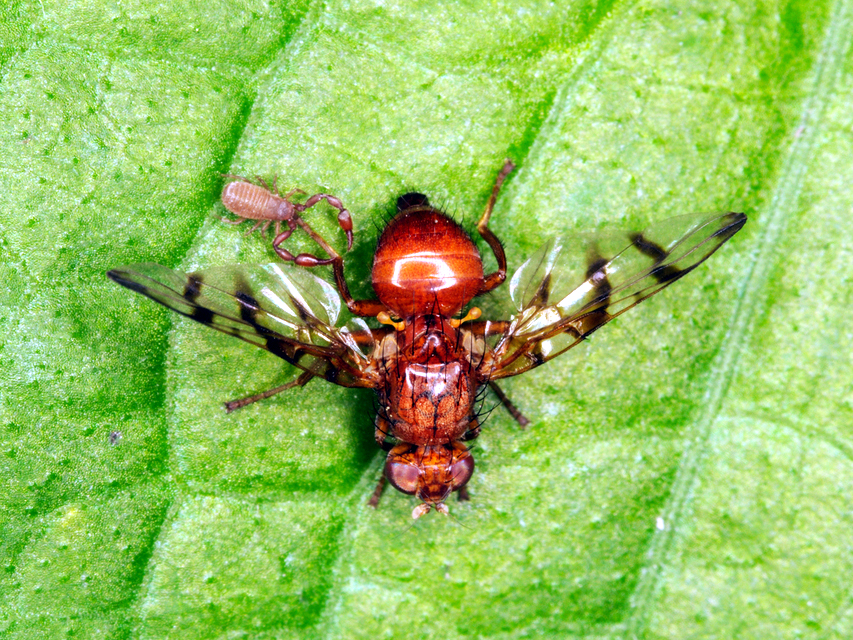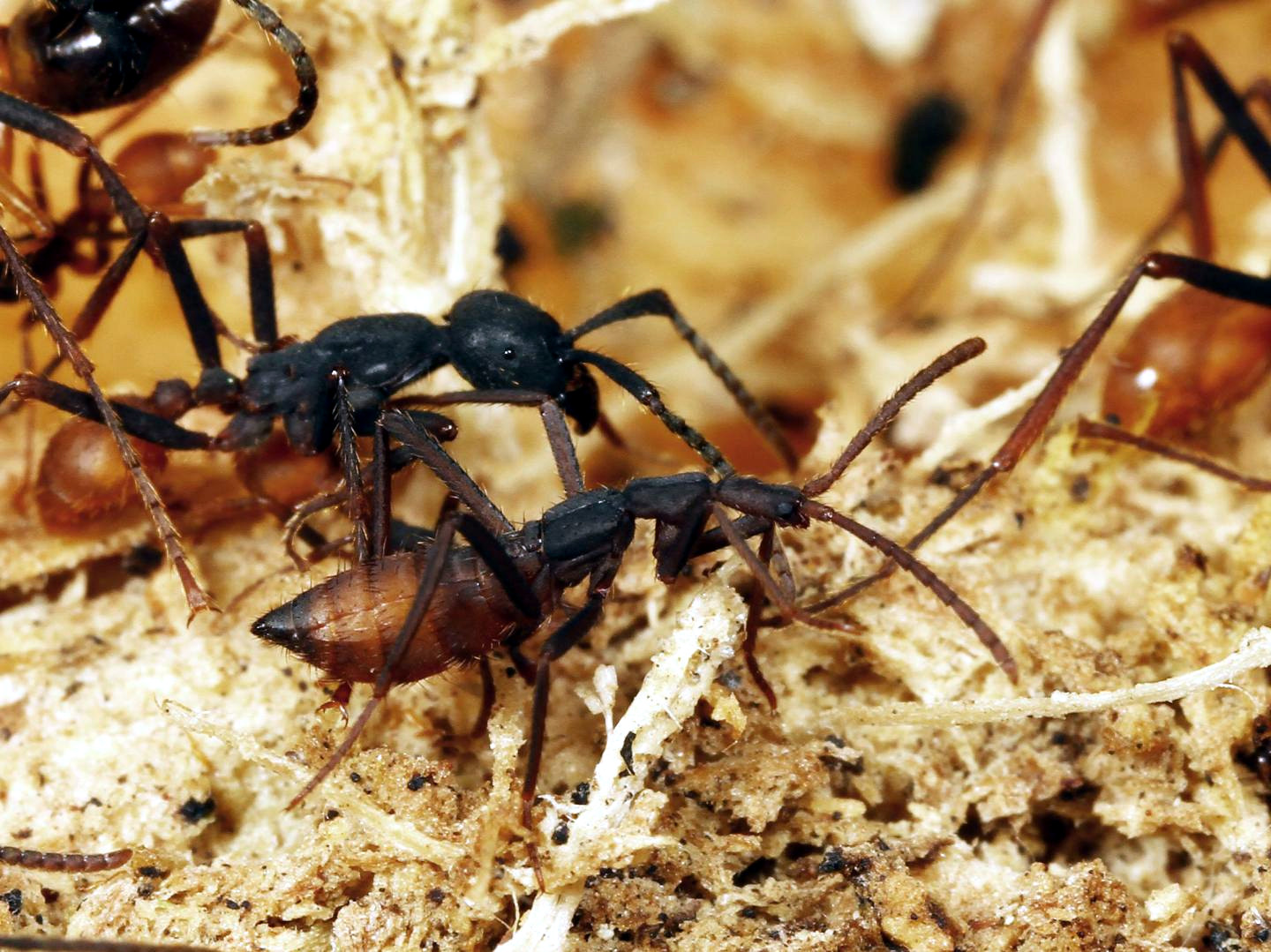
17 – Unpopular animals
Beside the animals shown at the previous stop, there are many species living in forest soil that are unpopular among most people. We’d like to introduce them a bit closer, hoping you will discover their beauty as you learn more about them. Don’t forget: they are also important and helpful part of forest community!
Pseudoscorpion has a terrifying name but it is absolutely harmless to humans. It is only mm-sized arthropod, does not have a stinger, and feeds only on creatures smaller than its own size. You can meet up with it in leaf litter and under the bark of decomposing trees.

Venom glands are situated at the top of pincer-like pedipalps. It is used to immobilise the prey.





Soil centipedes are quite slow predators that capture typically smaller invertebrates. They spend most of their life underground – that’s why they are so pale!


Their legs are short and weak, so they have relatively slow and sinuous movements.




Rove beetles are abundant in natural forests, though they are rarely seen by hikers as being nocturnal. During daytime you may find them under stones or in leaf litter. They are slim insects of 1–2 cm size, with short, aborted wing covers that do not hide their abdomen. Therefore the abdomen is quite flexible. They bend it forward like the tail of scorpion in case of danger. Don’t be frightened, it is just a camouflage! Rove beetles are useful helpers in vegetable gardens against pests: they eat snails and slugs as well.
The devil's coach-horse beetle is the largest rove beetle of Hungary. Similarly to other rove beetles it emits a foul-smelling liquid when disturbed, trying to discourage the attacker.


Rove beetles can even fly, however they hardly use this method for changing location. One pair of neatly folded membranous wings can be found under their short elytra.



Some rove beetle species occur only in anthills. They have two types of strategies to make themselves accepted by the otherwise militant and hostile ant colonies. Some species have quite ant-like form, thus they can be hardly distinguished from the inhabitants of the colony. This tactic is called camouflage. On the other hand, other species use mimicry: they emit special compounds. Though they do not resemble the colony residents, they can persuade ants that they are actually conspecifics, using chemical communication. Ants come to grief either way, because rove beetles later eat up their unsuspecting hosts. (Photo by Taku Shimada)

Did you know?
Springtails are one of the most ancient terrestrial animals. Probably you have already met them – at least in the soil of a houseplant. These miniature (almost 1 mm-sized) white jumping creatures live in soil and leaf litter, and feed on decomposing organic materials. Their name comes from the ability to spring away, using their special abdominal tail-like organ. The so-called furcula is folded beneath the body at rest.
